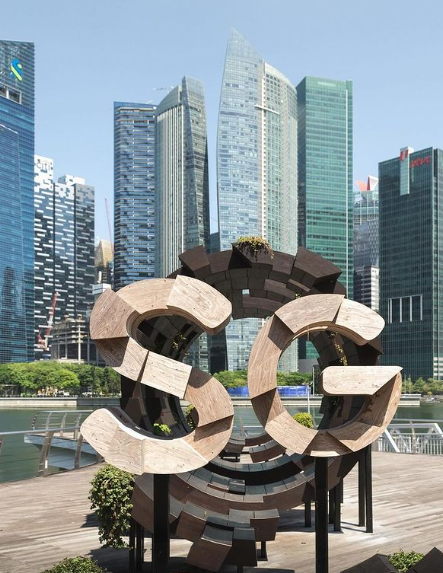
This month, the world again saw the observance of Earth Hour, the annual acknowledgement of how much energy the human race burns through and a symbolic avoidance of inessential lights. Such a global day is expected to raise awareness on man-made climate change and its impact. In Singapore, the impact is being felt literally every minute of the day, with many schools relaxing uniform regulations to deal with the onset of summer.
On March 23, Singapore Prime Minister Lee Hsien Loong posted on X: “Feeling the heat lately? 2023 was the 4th warmest year in Singapore and 2024 will be warmer. We must work together to safeguard our future. Small steps make a big difference. Start by turning off non-essential lights during #EarthHour at 8.30pm! – LHL”
The prime minister was referring to the 2023 Annual Climate Assessment Report, released by the Meteorological Service Singapore (MSS) of the National Environment Agency (NEA) on March 23, 2024, coinciding with Earth Hour.
The report said: “At the Changi climate station, the annual mean temperature in 2023 was 28.2°C, 0.4°C above the long-term average and the fourth warmest on record since 1929, tied with 2015 and 1997.”
It added: “The mean temperature for the last decade from 2014 to 2023 reached a new high of 28.06°C, [which is] 0.05°C above the previous record for the decade from 2013 to 2022. This is the third consecutive year that Singapore’s decadal mean temperature record was broken, with 5 of the top 10 warmest years occurring in the last decade.”
One does not actually need to read temperature charts to understand how hot it is in Singapore; one only needs to step outside an air-conditioned space during the day.
The Straits Times reported this week that some schools in the island nation had asked their students to swap their regular uniforms for the lighter and more comfortable physical education (PE) attire — T-shirts and shorts — because of the very high temperatures in recent days. ST reported that this easing of regulations would remain in place “until further notice” in several schools.
Quoting information from the MSS website, the ST report said that “the highest temperature Singapore has experienced so far in 2024 was 36.3 deg C on March 24, and maximum daily temperatures are expected to be around 34 deg C and 35 deg C until the end of the month”.
The NEA has urged the public to shield themselves from the sun’s ultraviolet rays with umbrellas and sunblock lotions. And this is technically only the spring season in Singapore.
Given the meteorological trend, it is expected that the summer of 2024 might continue the record-breaking heat streak.

Urban heat and wet bulb effects
Like most heavily built-up cities, Singapore has been experiencing the “urban heat” effect; and, because of the island’s humid climate, the heat is made worse by the “wet bulb” effect.
In January 2019, the YouTube channel CNA Insider presented a video report titled ‘Why Singapore Is Heating Up 2x Faster Than The Planet’. This report explored the abovementioned two effects, as applicable to Singapore.
The CNA report began with the prediction: “By 2100, maximum daily temperatures are expected to reach 35-37°C.” Is this cause for worry for Singapore, seeing that many parts of the world deal with much higher temperatures?
Replying to this question, Dr Muhammad Eeqmal, Senior Research Scientist, Centre for Climate Research Singapore, said, “We do [have to worry]. Because of our location, where we are surrounded by sea, we also get higher humidity. When temperature and humidity get high enough, our bodies struggle to cope. It can actually be quite lethal for us.”
Then followed an explanation of “Why is humidity + heat dangerous?”, with quick experiments conducted in a closed chamber.
Scientist Dr Jason Lee, Associate Professor, Department of Physiology, National University of Singapore, and the CNA video report presenter Joshua Lim sat inside a room marked “Environmental Chamber” to demonstrate what a temperature of 35 degree Celsius feels like at 40 per cent humidity.
In this chamber, Lim engaged in some physical exertion, to mimic everyday physical activity, and he promptly began sweating but felt “still okay”.
Then the humidity in the experiment chamber was increased to 90 per cent, while the temperature remained 35 degree Celsius. Lim’s hands went clammy, and he said, “It definitely feels almost like there’s a weight.”
He performed a few more star jumps, again to mimic regular activity, and found that it was “[getting] harder to breathe”. Reporting to the researcher how he felt, Lim said, “I do feel a little more exhausted faster than just now”.
Dr Lee explained why: “The main avenue of heat loss [from the body] is to evaporate the sweat that is on your skin.” This process of evaporation is important. “If not, the sweat will simply drip off, and no heat will be lost in that process.”
The simple rule of sweat evaporation and body cooling is that the higher the ambient humidity level, the slower such sweat evaporation is, making the body risk overheating quickly. This is defined as the “web bulb effect”. As the temperature in Singapore increases, combined with the high level of moisture in the air, even basic activities could make people suffer under this wet bulb effect.

Next, the CNA report tried to understand why Singapore was getting hotter. Lim showed viewers how architecture in Singapore had changed drastically since the 1950s, with low buildings surrounded by greenery replaced by rows and rows of highrise structures.
Dr Matthias Roth, Professor, Department of Geography, National University of Singapore, went round the city with Lim, with a sensor measuring the ambient temperature in various places — a stretch of road flanked by greenery in Lim Chu Kang at 10pm had a temperature of 24.8 degree Celsius; in the highly urbanised Orchard Road area at 10.30pm, the sensor measured a temperature of 29.1 degree Celsius.
The distance between the locations could be covered by car in just 30 minutes, but one location was more than 4 degree Celsius hotter than the other. The difference in temperature could be explained by the highrises trapping heat and releasing it back into the lower atmosphere. This is defined as the “urban heat” (aka “urban heat island”) effect. Singapore has been experiencing this… a lot.

Combating urban heat islands
In an explainer on Urban Heat Islands, the Climate Portal of the Massachusetts Institute of Technology (MIT) said: “The most obvious way to fight the urban heat island effect is to reintroduce vegetation. Cities can expand parkland, plant street trees, and install ‘green roofs’ designed to harbor plant life. One study found that the presence of vegetation can lower nearby air temperatures by as much as around 4°F.” That is only a fraction of 1°C, but with enough vegetation spread around the place, some relief may be found.
Roth said that it was important to save some of the “unprotected forested areas” and leave them — without any construction — “untouched as pockets of cool areas”. In contrast, roof gardens and wall gardens were not likely to significantly mitigate urban heat, he added.

The video report had pointers for individuals to combat the rising heat in Singapore. Actions that an individual could take include using the MRTS instead of their personal car to cut down on emissions, and setting the air-conditioner at home at a slightly higher temperature.
In conclusion, the video report left viewers with the question: “But are you willing to change your habits?”


